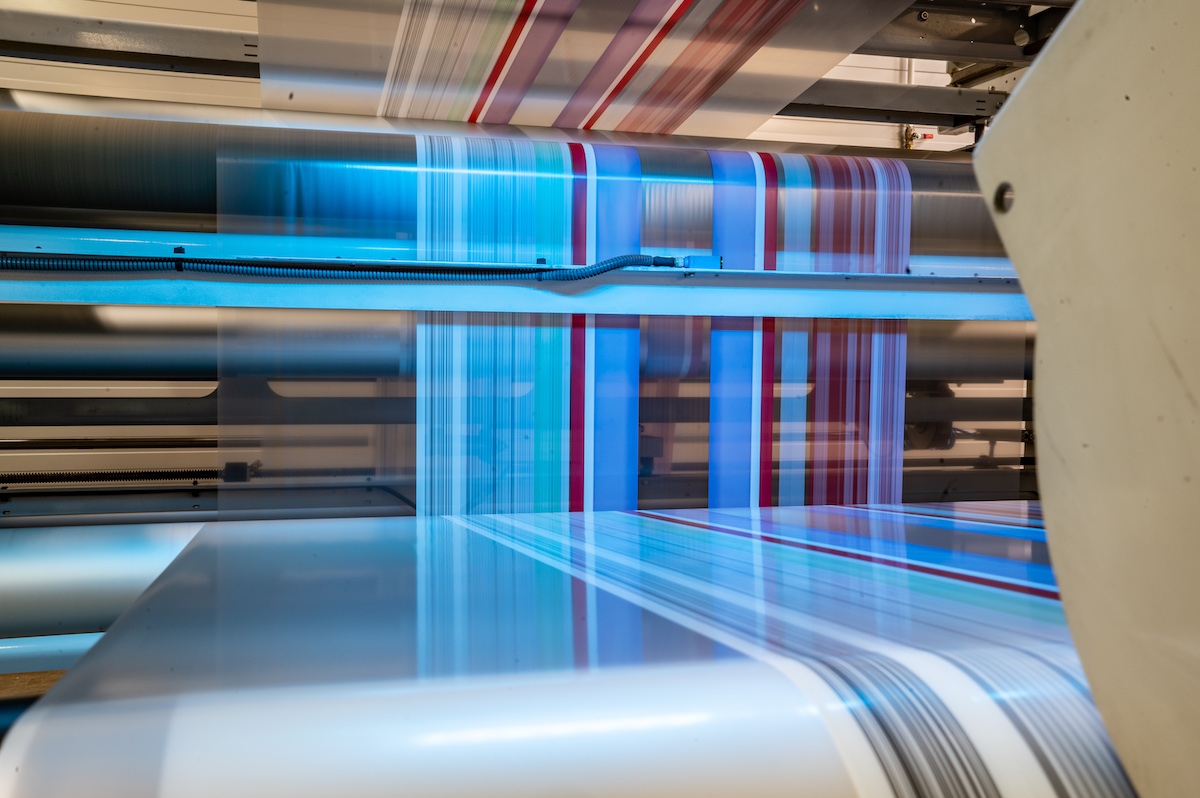



Are you looking for a proven film that is best suited for flexography and laminating products?
Our flexography film is what you have been looking for!
The Krus company has been successfully producing films and film packaging for over 30 years.
Our company not only manufactures quality films but also has a flexographic department to meet all of your film printing needs!
In addition, we can test the films that we offer for lamination, the production of doy packs, and for flexography itself in the best possible way in daily practice.
We will be happy to put our knowledge and expertise at your disposal, so make sure to contact us and get the best flexography film on the market!
Send Inquiry
Flexography is a technique that is particularly popular in the packaging sector, as it gives manufacturers the opportunity to print on the substrate itself – in our case, a film made of various materials cut into different dimensions. Today, even credit cards and similar products are made using flexography.
The process offers amazing flexibility, as plastics aren’t the only substrate that can be printed on – paper, cardboard, and paperboard can also be used in flexography.
We use four materials with different properties for the creation of a flexography film. We can advise you on which material is most suitable for your packaging needs, so make sure to contact us before ordering!
LDPE film is made of polyethylene, which is particularly soft and produced under high pressure. Polyethylene is a plastic material consisting of hydrogen and carbon. It is not harmful, which makes it especially suitable for food packaging. In general, LDPE has high elasticity as well as great sliding friction properties.
LDPE regranulate film is also made of soft polyethylene. Since this product is made by re-granulating the plastic back into its original form using the leftovers of production processes, it is very environmentally friendly.
We are very proud of this highly innovative technology as the films produced this way do not lose any quality or durability compared to brand-new packaging.
PCR is also an environmentally friendly material, this time produced from consumer-made waste. In other words, this can be both green waste, as well as paper or old plastic packaging. The complete name for this material is, therefore, ‘post-consumer recycled’ plastic.
PIR stands for ‘post-industrial recycled’, which means “recycled after industrial use.” In simple terms, it is plastic waste created during various manufacturing processes. As such, it can be easily collected and reprocessed after initial sorting.
Do not hesitate to contact us for more information about the different films and to find out which product is the right one for your project!
Send InquiryOur flexography film can be ordered in different colors or even in a transparent form. We will gladly advise you personally on exactly which colors can be achieved. Besides the application of our films and films for flexography, it is also possible to use this product for lamination. As always, feel free to contact us at any time to get more details!
We base the order quantity on your individual needs. In other words, there is no minimum quantity that you have to meet in order to buy our films.
The company Krus can manufacture flexography films based on your needs and specifications, so don’t hesitate to constant us and discuss the matter with our employees!
Flexography films are mainly used by the packaging industry. As such, apart from manufacturing the material for our customers, we also use it ourselves.
The advantage of flexography films is that they can be dyed and printed on. There are virtually no limits to the design, so advertising slogans or instructions can be easily placed on the packaging. This makes flexography ideal for certain sectors, such as the food industry.
Yes, we can add an antistatic agent to flexography films in order to minimize the risk of electrostatic charging. Other additives we can mix into the films during the production process are UV stabilizers (to protect the goods from solar radiation) and antiblock, as well as antifog additives (to prevent sticking and fogging of the bags, respectively).
As the waste regulations are very clearly defined in Germany, the disposal of flexography films is quite simple. All you have to do is to throw the used films in the yellow garbage cans or in the yellow bags.